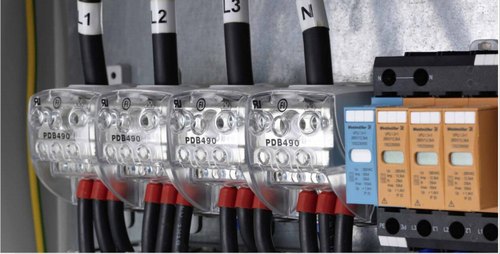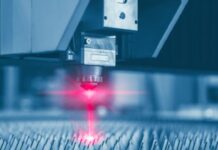Power distribution blocks are convenient and economical ways of evenly distributing electric circuits from a single input source to customers in the most efficient way possible. It helps reduce the amounts of wires in an electrical panel resulting in saving time and money.
If you invest in a power distribution block, it eliminates the need to individually wire each device in the control circuit back to the power source by employing one large wire on the input side, and multiple smaller wires on the output side to your devices downstream. This will give your electrical panel a clean, hassle-free, and professional look.
How Does it Work?
They are designed to split a large wire into smaller wires wherever small wires require fusing. The input blocks accept wires from 1/0 to 4 AWG, while the fused outputs accept wires from 4 AWG to 8 AWG. These fuses can be pulled and inserted without any need for removing the cover.
Types of Power Distribution Blocks
They can be categorized as per their structure, device type, and termination options. Let’s look at the types of power distribution blocks that you can typically find.
- Blocks by Structure
- Single Level Pass-Through Terminal Blocks: These are used to connect two wires together and are often referred to as single feed terminal blocks. They are the simplest types of single-level terminal blocks with just one input and output contact each.
- Dual-Level Pass-Through Terminal Blocks: These blocks come with another level of connection terminal that is stacked on the first one. This is generally done to save on space.
- Three Level Terminal Blocks: They are just like dual-level blocks, with an extra level at the top. One of the advantages of using multilevel blocks is that they allow multiple connections to be established in the same block.
- By Device Type
Ground Terminal Blocks: These blocks resemble a single level feed through the terminal; however, the only difference is that the connection between the blocks and the metal where the wire is terminated are grounded to the panel.
- Fused Connection Terminals
They are similar to pass-through blocks; however, the metal connection strip is replaced in a fuse in this type. Therefore, it makes it more secure since the wires are connected through a fuse.
- Thermocouple Terminal Blocks
They are built to accept thermocouple lead connections and can be clamped together on both sides of the block which eliminated the need for a metal connection strip inside of the block. However, this isn’t always the case, and some thermocouple blocks may have a metal connection strip of the same metal present.
- Power Distribution Blocks
They are mostly used in electrical power distribution. As mentioned at the beginning of the article, they are an economical, convenient, and safe way for power distribution from a single input source to multiple outlets. In this type of setup, one large wire is connected to the input terminal of the block followed by multiple output terminals provided at the output.
Power distribution blocks are powerful tools that have transformed the world in more ways than one. Therefore, it’s important to choose one that is reliable, efficient, and delivers exceptional performance then you need to partner with a reputed electrical company so that you only get the highest quality power distribution blocks for your requirements.
So, now that you know everything that you need to know about power distribution blocks, it’s time to partner with that electrical company of repute!









![Anso FG Reviews: UPDATED 2024 [ansofg.com] Anso FG Reviews UPDATED 2024 [ansofg.com]](/wp-content/uploads/2023/12/Anso-FG-Reviews-UPDATED-2024-ansofg.com_-100x70.png)








